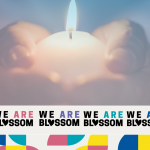A Quaint, Chronically Online Cottage where Sapphics Reside. Cottagecore
Category: Subcultures
Author: Sarah Curtis
Cottagecore is an aesthetic which centres around earthly sapphic women residing together in a romantic rural cottage setting; reaping the benefits of a self-sufficient agricultural life; out of the grasp of patriarchal capitalism. Cottagecore content features saturated green fields laden with strawberry bushes, prairie dresses, domestic mastery, and lesbian romance. The significance of cottagecore is founded in its unpredicted mainstream appeal, wide influence within Western culture, and escapist value which appeals to various demographics (Mirny 2021: 2).
The subculture particularly appeals to the online lesbian community who have pioneered the aesthetic. Posts captioned ‘#cottagecore’ have surpassed six billion on Tik Tok as of May 2021 (Tik Tok 2021) and commonly depict women performing cosy, home based activities which promote anti-consumerist self-sufficiency. Cottagecore strikingly resonates with the lesbian separatist movement of the nineteen seventies which saw rural women-only communities develop as an emblematic space for lesbian feminist culture (Jennings 2018: 91). Jennings (2018) cites an individual who grew up as a young lesbian in the mid-seventies and “visited Amazon Acres women’s mountain farm, a wimmin only farm”. She goes on that “this was the honeypot for a baby dyke—strong confident women in flannelette shirts, swimming in pools or walking around naked” (91). The imagery she describes mirrors that which we see in cottagecore themed Tik Toks. Unlike the seventies, the sense of community is now founded in likes and comments rather than co-living as a collective.
These pure and gentle depictions of lesbian sexuality present a contrast to the usual overt sexualisation of queer women as sexual objects for male gratification, which we often see in mainstream media. Das and Farber (2020: 2) offer the need for such queer-specific media “stems primarily from the fact that mainstream media outlets often do not grant adequate visibility to people in the queer community and may perpetuate images that are stereotypical or inaccurate”. Lesbian relationships in rural communities are rarely depicted in mainstream media, as rural environments are dominated by traditional nuclear family representations.
Cottagecore allows lesbians to counteract their historic overtly sexual objectification in a setting which is highly traditional and patriarchal. Social media gives opportunity for self-presentation, which in the instance of cottagecore is ethereal and quaint, rather than stereotypically hypersexual or male dominated. “Therefore, queer self-presentation in online spaces suggests new ways that people may empower themselves individually, and possibly galvanize collective social change” (Das and Farber 2020: 2). This notion is epitomised with Tik Tok users depicting rurality as more adjacent than antithetical to queerness and women existing in total harmony without any company from men.
Although the aesthetic is rooted in blissful queerness, with women loving women employing an independent life, free from male gaze and commodification, its origins have become forgotten as it has undergone mainstream popularisation. Cottagecore can be rather contradictory as it embodies conservative and traditionalist values, reminiscent of the traditional wife spectacle, yet strongly appeals to queer women who idolise self-efficiency (Mirny 2021: 2). Despite cottagecore’s promotion of an anti-capitalist queer lifestyle, it is fundamentally consumerist in its pursuit of such a picturesque life which would typically requite vast financial wealth to maintain.
The aesthetic tends to promote is a highly mediated and romanticised version of rural queer living, which is not only unattainable, but also exclusionary of people of colour (POC). The aesthetic lacks intersectionality as it is only inclusive of one specific type of queer individual, a slim white woman. Queer people are reflected in cottagecore, but that is the extent to which a marginal identity is largely depicted, deficient of queer POC. The racial prejudice which is often associated with small town rural communities is unfortunately reflected within the aesthetic. One bisexual and black interviewee of Gray’s (2009: 1176) disclosed that he felt he had to choose between his blackness and queerness in high school in a rural area. The rural circumstances made him feel like he could not embody two minorities and had to choose one due to the threat of being too ‘unpalatable’. Alimahomed (2010: 153) furthers this notion in their study, offering that “women of color, in particular, often felt that they were forced to pick and choose among identities’ in which they ‘resisted pressures to make lesbianism their ‘‘dominant’’ or ‘‘master’’ identity.” Although cottagecore challenges rurality as being anti-queer, it fails to challenge rurality as anti-POC and lacks intersectionality.
The cottagecore aesthetic has proved itself to be influential on the lives of queer women, particularly those who reside in rurality. Lesbian feminists are continuing to imagine rural lands as providing both a space separated from men in which women can discover themselves, “and an opportunity for women to learn new skills and undertake for themselves the tasks that patriarchal society conventionally assigned to men” (Jennings 2018: 99). Although it presents issues with intersectionality and overt romanticisation, Tik Tok users are trying to combat this through educational posts.
Overall, the cottagecore dreamland on Tik Tok for queer women to escape to and find community is a positive queer artefact as the society which manifests in patriarchal capitalist reality for this demographic can be less welcoming.
References and useful resources:
Alimahomed, S., (2010) Thinking outside the rainbow: women of color redefining queer politics and identity. Social Identities [online], 16(2), 151-168. Available from: doi: https://doi.org/10.1080/13504631003688849
Das, S., Farber, R., (2020). User-generated online queer media and the politics of queer visibility. Sociology Compass [online], 14(1), 1-12 Available from: doi: https://doi.org/10.1111/soc4.1282
Gray, M., (2009). Negotiating Identities/Queering Desires: Coming Out Online and the Remediation of the Coming-Out Story. Journal of Computer-Mediated Communication [online], 14(4), 1162-1189. [Viewed 15 May 2021]. Available from: doi: 10.1111/j.1083-6101.2009.01485.x
Herrera, AP., (2017). Theorizing the lesbian hashtag: Identity, community, and the technological imperative to name the sexual self. Journal of Lesbian Studies [online]. 22(3), 313-328. Available from: doi: https://doi.org/10.1080/10894160.2018.1384263
Jean, Y., (2020). Cultivating Freedom This Year, Cottagecore Exploded—But Excluded Black Women. Bitch Media [online]. 21 December 2020. Available from: https://www.bitchmedia.org/article/black-women-cottagecore-whiteness
Jennings, R., (2018). Creating Feminist Culture: Australian Rural Lesbian-Separatist Communities in the 1970s and 1980s. Johns Hopkins University Press [online], 30(2), 88-111. Available from: doi: https://doi.org/10.1353/jowh.2018.0015
Mirny, N., (2021). Escapism, identity, and the evolution of TikTok aesthetics. University Wire [online]. 30 March 2021 . Available from: https://www.proquest.com/wire-feeds/escapism-identity-evolution-tiktok-aesthetics/docview/2506736471/se-2?accountid=13828

Blossom LGBT CIC is a not for profit organisation operating in Surrey | We're registered as a community interest company registered in England | Company Number 13447658 |
Newsletter
Signup for news and special offers!
Thank you!
You have successfully joined our subscriber list.






Leave a Reply